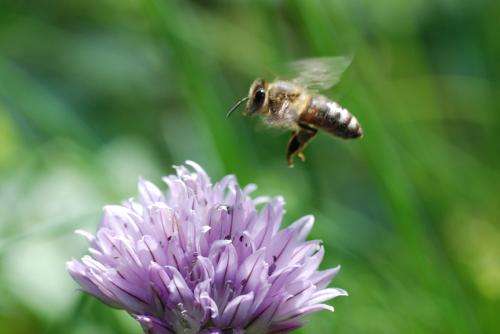Team finds gene that helps honey bees find flowers (and get back home)

(Phys.org) —Honey bees don't start out knowing how to find flowers or even how to get around outside the hive. Before they can forage, they must learn how to navigate a changing landscape and orient themselves in relation to the sun.
In a new study, researchers report that a regulatory gene known to be involved in learning and the detection of novelty in vertebrates also kicks into high gear in the brains of honey bees when they are learning to how to find food and bring it home.
Activity of this gene, called Egr, quickly increases in a region of the brain known as the mushroom bodies whenever bees try to find their way around an unfamiliar environment, the researchers observed. This gene is the insect equivalent of a transcription factor found in mammals. Transcription factors regulate the activity of other genes.
The researchers found that the increased Egr activity did not occur as a result of exercise, the physical demands of learning to fly or the task of memorizing visual cues; it increased only in response to the bees' exposure to an unfamiliar environment. Even seasoned foragers had an uptick in Egr activity when they had to learn how to navigate in a new environment.
"This discovery gives us an important lead in figuring out how honey bees are able to navigate so well, with such a tiny brain," said Gene Robinson, a professor of entomology and neuroscience and director of the Institute for Genomic Biology at the University of Illinois. "And finding that it's Egr, with all that this gene is known to do in vertebrates, provides another demonstration that some of the molecular mechanisms underlying behavioral plasticity are deeply conserved in evolution."
More information: The paper, "Activity-Dependent Gene Expression in Honey Bee Mushroom Bodies in Response to Orientation Flight," is available online. jeb.biologists.org/content/216 … 1/2031.full.pdf+html
Provided by University of Illinois at Urbana-Champaign


















